|
Quote of the Day:
"I have no particular talent. I am only inquisitive."
-- Albert Einstein
Objectives:
The student will compute the area between 2 curves with
respect to the y-axis as well as with respect to the
x-axis.
1. Collect homework.
2. Notice that you do not have to concern yourself about
where the curves go below the x-axis in finding the area
between two curves. The negatives work themselves out.
Recall that in determining the total area between a
curve and the x-axis over a particular interval, you had
to find out if the curve intersected the x-axis between
the beginning and end of the interval. You do not need
to do that here. Look at the example below:
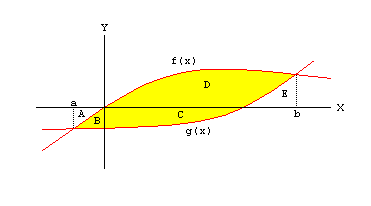
Let the area of each region in the diagram be denoted by
the capital letters, A, B, C, D, and E. To determine the
shaded area between the two curves, you would integrate
f(x) from x = a to x = b and then subtract the integral
of g(x) over the same interval.
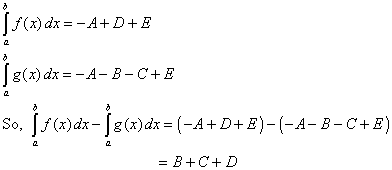
Note that B + C + D is the area we were seeking.
3. Example:

First, determine the points of intersection and draw a
picture of the two relations. What do you notice about
this drawing (that makes it different from yesterday's
problem)?
If you try to integrate with respect to the x-axis, you
will not find the total area. You must turn integrate
with respect to the y-axis; in other words, the
rectangles that you are summing are drawn horizontally.
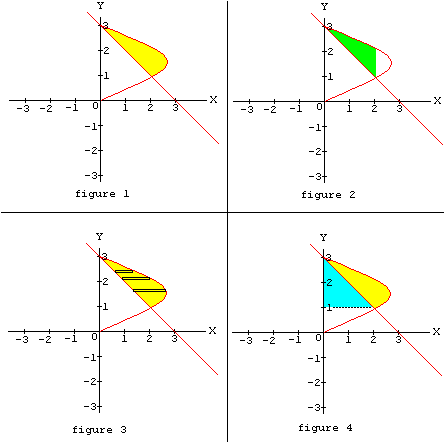
Figure 1 shows the area that we are trying to find.
Figure 2 shows the area that we would compute if you
evaluated the integral with respect to the
x-axis.
Figure 3 shows that we are summing up rectangles which
are drawn horizontally – not vertically.
Figure 4 shows the area "under" the parabola (the blue
and yellow shading) and the area "under" the
line (just the blue shaded region).
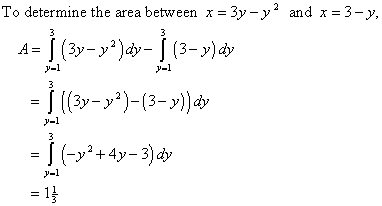
4. Here are the two formulas for finding areas between two
curves:

Emphasize that you are summing areas of rectangles
whose base is either dy or dx, and whose height is the
difference between the two functions or relations.
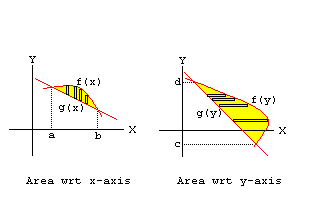
5. Examples
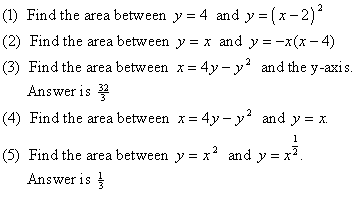
6. Assignment:
p. 448 (3, 5b, 6, 11, 13, 14, 18, 21, 31)
Click here to go to the next page
|







